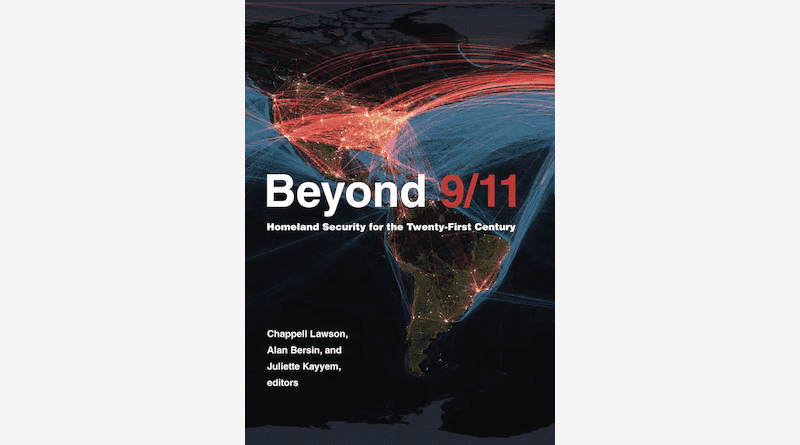Beyond 9/11: Homeland Security For The Twenty-First Century – Book Review
By Adam Arthur
Beyond 9/11: Homeland Security for the Twenty-First Century is an edited volume featuring chapters by multiple authors. This book works, first and foremost, as a primer on issues faced by the U.S. Department of Homeland Security in carrying out its broad mission. In other regards, however, the book is lacking. This is particularly the case in the text’s failure to pinpoint the origins of security issues. This is also the case in its failure to address strategies that policymakers might formulate and utilize to address such issues.
The book works well as a general overview, and it would serve as an excellent introductory text in an academic course. The authors of each chapter make sure to point out many of the gaps and vulnerabilities involved in the U.S. Department of Homeland Security’s missions. However, with the exception of the penultimate chapter, “Homeland Security and Transnational Crime”, which suggests a strategy of disruption against global criminal networks, the book’s various authors do not suggest much direct action, nor do they suggest proposals that would improve the agency’s efficiency and capabilities.
Throughout the book, a reader can work through a checklist of issues involved in the Homeland Security enterprise: these include a mandatory discussion of how to balance privacy and security in light of the U.S. Department of Homeland Security’s expansive reach, as well as a discussion of mission areas that overlap with or seemingly duplicate the functions of other U.S. federal agencies such as the Centers for Disease Control, the Federal Bureau of Investigation, and the U.S. Department of State. Also included, and addressed by several of the chapter authors, is the question of how an agency focused on domestic security might engage with the challenge of increasingly transnational threats, including cybersecurity incidents, global terrorist operations, and organized crime.
In discussing these topics, the book does an excellent job of drawing attention to the bureaucratic structure of the U.S. Department of Homeland Security and how it might be more efficiently reorganized. The book also, in several chapters, addresses threats and vulnerabilities, as well as extant gaps in the U.S. Department of Homeland Security’s efforts to address them. For example, the chapter “DHS and the Counterterrorism Enterprise” by Matthew Olsen and Edoardo Savarelle discusses the issue of extremist radicalization, which often occurs on either a domestic or transnational basis through online communication, and which makes this an issue that might not adequately be addressed by physical border control measures. Although this chapter addresses a Countering Violent Extremism (CVE) strategy, the authors discuss only the fact that it is difficult to develop a workable metric for the results of such a strategy, without providing their own take on how CVE efforts may be improved by the U.S. Department of Homeland Security in the future.
The following chapter, “Rethinking Borders: Securing the Flows of Travel and Commerce in the Twenty-First Century”, by Seth M.M. Stodder, is where the volume’s flaws make themselves most apparent. Stodder suggests that current border protection and enforcement measures are simply the result of nationalist politics and security theatre. Unfortunately, this chapter does not present thorough or adequate arguments for alternative policies from a national security standpoint. The reasoning that Stodder provides in this chapter is that, in his view, borders are now more secure than they have ever been before. This argument ignores the numerous issues that affect U.S. land and maritime borders, including the continuing threat of cross-border human trafficking and narcotics smuggling. Although Stodder provides some lip service to the idea of international cooperation on border security issues, he provides no suggestions for how this is to be implemented or what strategies might result from it. In short, this chapter’s principal weakness is its author’s tendency to succumb to his preconceived notions without conducting a thorough analysis of the subject matter. This in turn prevents Stodder from suggesting realistic policy alternatives.
The chapter “Rethinking Transportation Security” by Peter Neffenger and Richard Ades is where the volume displays its greatest strength at identifying gaps in current mission capabilities. This chapter correctly points out that although the U.S. Department of Homeland Security attempts to create a comprehensive organizational structure dealing with transportation security threats via air, land, and sea, maritime security threats are given minimal attention relative to aviation security. This chapter takes the time to suggest a bureaucratic reorganization involving greater fusion between agencies involved in maritime security efforts.
The book’s second-to-last chapter, “Homeland Security and Transnational Crime” – written by two of the book’s editors, Chappell Lawson and Alan Bersin – provides the most that the volume offers in the way of active policy suggestions. This chapter suggests a strategy of disruption against transnational criminal enterprises by Homeland Security agencies. This chapter also suggests greater intelligence cooperation between the U.S. and allies. If there is one flaw in this chapter, it is that the authors do not consider the relative trustworthiness of current or potential allies in intelligence cooperation, nor do they consider the risk that intelligence fusion might be used as cover for hostile intelligence collection efforts in the event of a diplomatic conflict.
As an edited volume, Beyond 9/11 gives a comprehensive overview of the U.S. Department of Homeland Security’s mission areas. The book also provides an introductory summary or refresher on the many issues involved in the Homeland Security enterprise in a highly politicized climate. Furthermore, a number of capability gaps are identified, although the chapter authors make few suggestions for how to mend these gaps. The authors also make few suggestions for how to develop new policies or new strategies on key issue areas. This proves to be the book’s main weakness, although it is not without utility for students or instructors seeking a guide to the main topics encompassed under a broad definition of “Homeland Security”, or general readers interested in an overview of the U.S. Department of Homeland Security’s missions.

